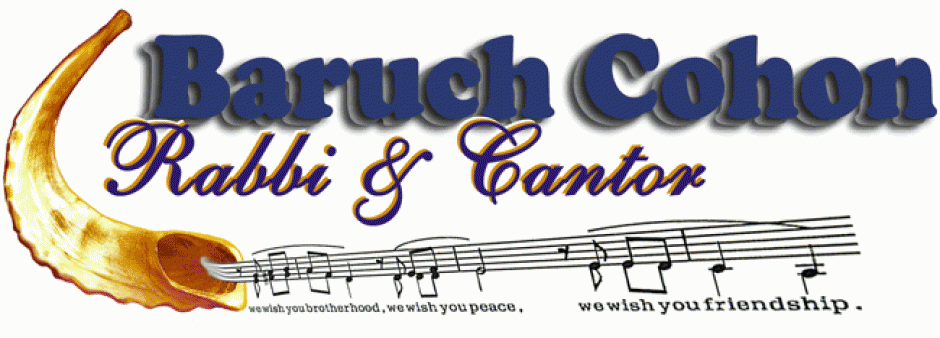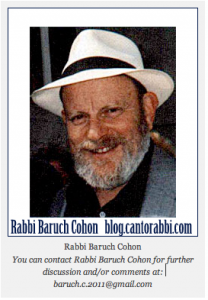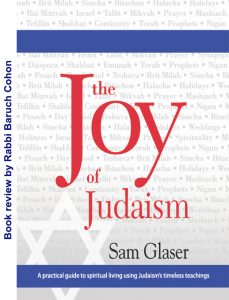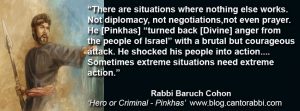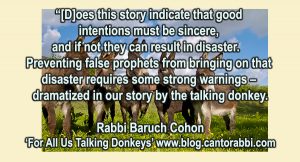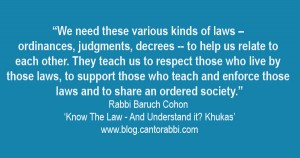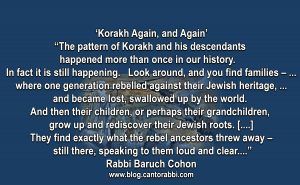ONE HAPPY JEW – a review of Sam Glaser’s book “The Joy of Judaism” – by Rabbi Baruch Cohon
By all means, take the time for this book. It is not a weekend read. But invest yourself in it, and you can inhale the author’s supremely positive attitude toward life in general, and Jewish life in particular.
So, is this a memoir? Yes, it encompasses more than a quarter century of experience, contacts, performances, and growth. Starting, as many of us do, from a partly secular and minimally observant youth, the author recounts his progress as he finds out more and more about his Jewish identity – and describes how he implements that knowledge in his personal life. We feel the joy this process brings him. Along the way he quotes some of the numerous Jewish clergymen and lay leaders he meets. As an internationally successful composer and performer, he comes in contact with Jewish communities and organizations of all types – movement-connected, politically targeted, strictly recreational, name it! He loves them all, entertains them all, and does his best to connect them all.
He implements his joy of Judaism at home, too. He finds a way to activate his love for his wife and children by leading them to create an observant Jewish home, and to share the beauty of their Jewish life with friends, family and strangers whom they host. That process is summarized in a later chapter where we can read his vigorous 4-page letter to his first son. Other fathers might well learn a little here, about how Jewish growth improves life, and the importance of communicating that growth to those we love.
So, is this a textbook? Definitely, it builds a detailed example of how the reader can use the author’s experience to reach a level of sacred joy.
Of course, this author’s personal experiences are tied to a career in music – singing, playing, recording, marketing albums, etc. How he applied that profession to his Jewish growth, could be quite different from anything the reader does. But here we can find some constructive ideas on raising the commitment level, for those in any line of work.
In chapter after engrossing chapter, we join the process of exploring Jewish life. And music figures in that process, as we roam the Jewish year.
Each chapter opens with lyrics and links to the author’s songs. With a little help from your computer, the author’s voice and his group’s music can provide a melodic intro to the subject. From the unplugged simplicity of a Shabat Shalom to Passover with an equally unplugged but so much more dramatic B’chol dor vador (“in every generation we must see ourselves as if we came out of Egypt”) quoting the Seder Haggadah, and on into the emotional Hatikvah of Israeli holidays like Jerusalem Day and Israel Independence Day, the year sings to us in familiar sounds and in the author’s added ones.
From the shofar calls, the solemn Kol Nidrey and some Sam Glaser chants, to the pure fun of a Shlomo Carlebach tune, we sample the High Holidays. From dancing in the Succah to the rhythm of some of the author’s favorite recordings, to kindling Hanukkah lights and memorializing the Maccabees along with Louis Armstrong and Martin Luther King and all who fight for freedom, we join in this extended excitement of the Jewish calendar.
Sampling the author’s experiences in professional engagements for groups including Hillel, Chabad, the Reform Biennial and a multi-cultural High Sierra program, we watch him pick opportunities to share Jewish music with any and all audiences.
So, is this book a promotion? After all, the appendix includes a sampling of the 1000-plus dates of Sam Glaser’s appearances the world over. We can cruise a list of his recordings. He names fans who follow him and even help sponsor his book. Yes, of course it’s a promotion – and it promotes more than Sam Glaser’s stardom. It promotes a noble cause. That cause is Jewish unity. Whether or not we are as observant as this author has become, we can accept each other – Hassidic, Orthodox, Conservative, Reform, Renewal, Reconstructionist, Labor Zionist, etc. etc. We share our Jewish roots. And so we share in growing the tree whose fruit we eat to live. As we nurture that tree, we strengthen our future.
Whatever your personal Jewish habits, you will find this book surprising, and sometimes exciting. Its stories from “the road” bring us humor, and some inspiring “small miracle” memories. Here and there, it suffers from some first-edition text-editing oversights (like omitted words, faulty usage, etc.) but the beautiful message comes through. “The Joy of Judaism” is definitely worth reading.
Enjoy it.
